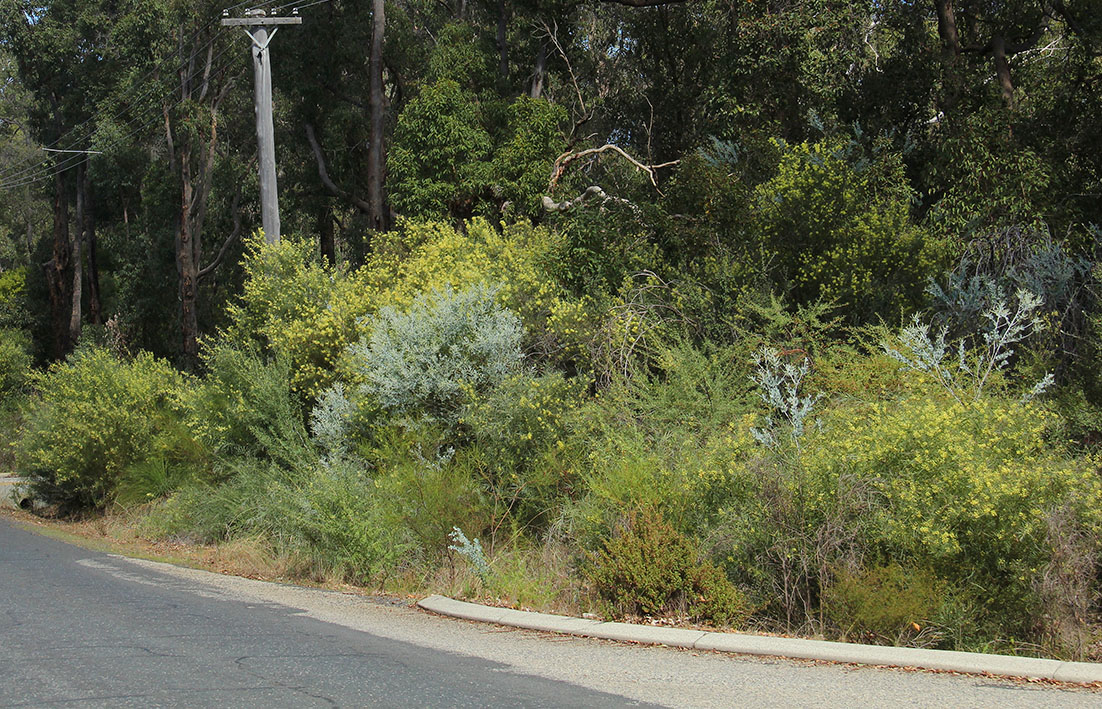
SHIRE of Mundaring has turned to Western Power to address residents’ concerns about the fire risk build-up of weedy wattle along road verges, particularly under power lines.
Residents Rob Greenwood and his wife Jacqueline Bousfield called on the shire to implement an environmental management control plan in consultation with Western Power to remove the weedy wattle in the area.
Mr Greenwood said he was motivated to raise this issue with the shire after a conversation he had with a contractor who was coppicing Flinders Range wattles along Riley Road last October.
He asked if the contractor could cut the wattles to the ground and the contractor said, “We’re not allowed to do that.”
Mr Greenwood said he’d replied for less than the cost of what you’re doing coppicing them, get rid of them.
Ten years ago, an environmental scientist who is based in the hills Simon Cherriman wrote a story explaining the dangers associated with weedy wattles.
Mr Cherriman said the weed was problematic because it tended to become the dominant plant species which eventually resulted in a monoculture native system.
“But the reason it’s a problem in this case is that many of these weedy species are extremely flammable and grow extremely tall and become a greater fire risk compared to the native system that was there,” he said.
“What motivated me to write that article was the daily reminders about a sick landscape.
“I’m constantly looking at the composition of the vegetation in the communities that we’re living in.
“Looking at the trees, the shrubs and the ground cover and whether each of those forest layers is composed of native trees and shrubs and grasses or introduced ones.
“At the time, and obviously since then, it’s become very obvious that many parts of our landscape are being invaded by weeds.”
He said it is still an ongoing issue because resources haven’t been properly allocated to resolve it.
“It’s quite difficult to address because there’s so many weeds out there and only so many people and labour options to get rid of them.
“But also, it has spread across different tenures and so it becomes complex with regards to responsibility.
“Is it private landowners, is it local government, is it Main Roads?”
A Western Power spokesperson said managemement of vegetation is done in accordance with Building and Energy guidelines.
“Management of the vegetation around powerlines is a shared responsibility between property owners, local governments and Western Power.”
The shire decided no further action would be taken as it was already liaising with Western Power, and weed control and environmental plans were already outlined in the local biodiversity strategy (LBS).
In the LBS 2023-2030, it is acknowledged that weeds affect bushfire fuel loads and can have negative environmental impacts.
According to the report it is impossible to eradicate all weed species.
“Shire resources and weed control efforts must be directed to weeds that have worse impacts such as rapid spreading, or increased bushfire risk.
Mr Cherriman is calling for more action to be undertaken from both the shire and residents to address this problem.
“We need more people aware of the really significant fire risk these plants are to our landscape, we need more resources allocated by all of the people concerned, especially the shire, but also other utilities and greater incentives to private land owners.”